How to create a forest
Lugano Arte e Cultura is the Center for the Arts of Lugano where visual arts, music and performing arts come together in a single place.
LAC is not a building, it is an active and thriving ecosystem born to offer the territory a space for relating art and culture in all its forms, generating a non-linear panorama, where present and past merge and offer a fluid vision, create an active community that is not reduced to the role of spectator but becomes a protagonist by taking part in a co-creation process.
Art and culture enter into a relationship and intertwine, produce a real social process, create communities and invade spaces, generating a great symphony, a total work of art, a forest where each tree fits into a program closely connected with the general LAC objectives.
The large complex, located in the center of the Swiss city, a few steps from Bernardino Luini’s masterpiece created for the Church of Santa Maria degli Angioli, provides 2,500 square meters of its space for exhibitions created by the Museo d’arte della Svizzera italiana (MASI Lugano), large exhibitions where important artists of the past dialogue with the giants of our present.
The rooms stretch out towards the lake, granting suggestive panoramas thanks to elegant windows that enter into dialogue with the exhibition projects offered to the public, creating a neutral and bright space, open to any type of experimentation.
Inside LAC, sound expands and offers images and emotions thanks to an acoustic engineering jewel, a concert and theater hall with almost a thousand seats, in which permanent partners of LAC perform – the Compagnia Finzi Pasca and the Orchestra della Svizzera italiana (OSI) – and where they find a meeting point for Lugano Musica enthusiasts.
The technical solutions developed in that place arise from the collaboration between the architect Ivano Gianola and the Müller BBM acoustic engineering studio in Munich – recognized for participating in the Sydney Opera design – and develop a modular acoustic shell suitable for all kinds of musical and theatrical performances.
Fundamental to the Swiss urban project is the Agorà, a small 300-seat amphitheater welcoming open-air shows and connecting with the large outdoor spaces of LAC and Piazza Luini, constituting with its 2,500 square meters the largest square in the city, a place where convivial aspects and art merge.
The complex project enclosed under the name of LAC was born from a social necessity, hence the desire to hold a public competition in 2001 not by chance won by Ivano Gianola, an architect who has always been the creator of works closely linked to the territory. Bearing in mind the genesis of the great space for Lugano culture, one can well understand the last fundamental element in the composition of the project as the adjacent Church of Santa Maria degli Angioli, guardian of the most important Renaissance pictorial work in Switzerland. The convent complex integrates the functions of LAC thanks to two fascinating cloisters, the first one adjacent to the large theater, the second one, with ancient frescoes, partly intended to house event rooms and LAC offices.
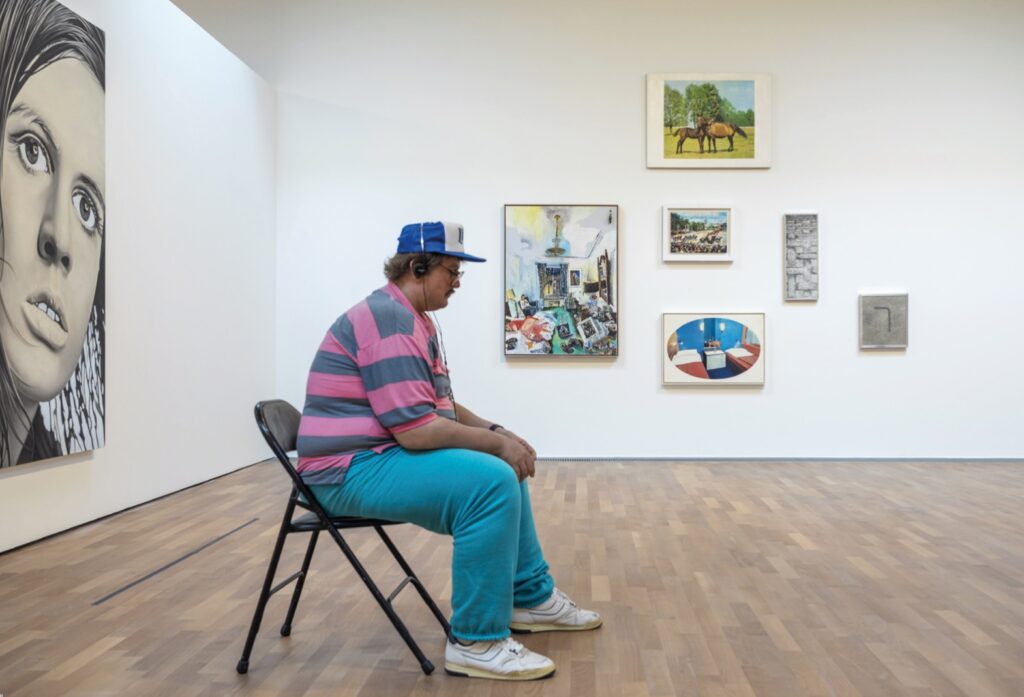
How to create a contemporary cultural journey
Museo d’arte della Svizzera italiana (MASI Lugano) was born from the union between Museo Cantonale d’Arte and Museo d’Arte della Città di Lugano. Founded in 2015, today it is one of the most visited art museums in Switzerland with a very rich cultural proposal. Among the forthcoming exhibitions ‘From Albrecht Dürer to Andy Warhol. Masterpieces from the Graphische Sammlung ETH Zurich’ will be open from 10 September 2023 to 7 January 2024.
Spread over two main venues – LAC cultural center and Palazzo Reali – offers a rich exhibition program thanks to a heritage of over 14,000 works – which embraces a timeframe that goes from the end of the fifteenth century to the present day – enriched thanks to the collaboration with Collezione Giancarlo e Danna Olgiati, entirely dedicated to contemporary art.
Its dialogue with LAC is fundamental, and its ability to insert exhibition and relational possibilities in the heart of Lugano, exhibitions of important contemporary artists who are offered to the public according to the most current relational and exhibition methods. This process can be well represented through the story of three recent episodes, three exhibitions that use the museum concept and spaces in a functional way to the contents they want to disseminate, in a hybrid path of roles and perceptions.
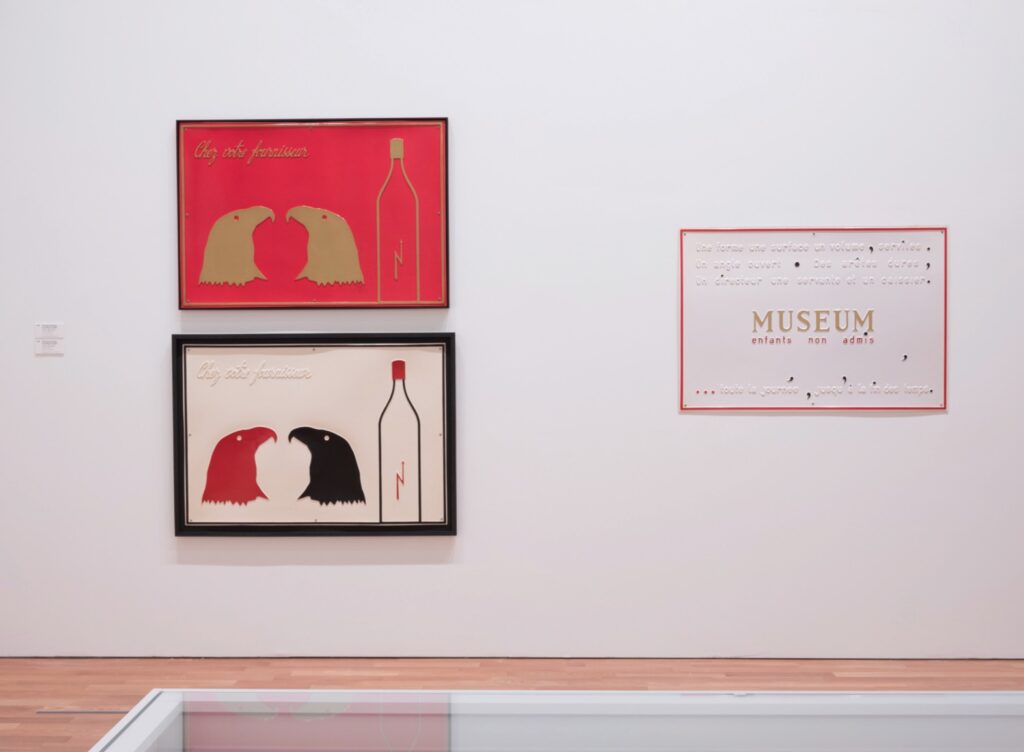
How to create a museum
Marcel Broodthaers. Industrial Poems | 01 May – 13 November 2022
The major exhibition dedicated to Marcel Broodthaers (Saint-Gilles, 1924 – Cologne, 1976) allows us to begin our journey through the spaces of MASI Lugano, LAC venue, through the eyes of one of the greatest representatives of conceptual art, a fundamental master for the history of art, unfairly little known by the general public. Broodthaers is a versatile intellectual, a fine anthropologist who has critically explored the relationship between art, language and communication, and the mechanisms, including the economic ones, that revolve around museums and the art system.
The exhibition itinerary reflects on the museum theme, on the museum object, raises questions on what a museum is through an anthological modality, which touches on the various themes and fixations of Marcel Broodthaers’ artistic universe: from the first Industrial Poems to the Musée project d’Art Moderne, Département des Aigles, from cinema to references to Magritte and Mallarmé, up to experiments on the border between the written word and the visual arts.
The central theme of the exhibition is Industrial Poems, a series of plastic signs with enigmatic combinations of words, letters, signs and shapes created between 1968 and 1972, in a historical period full of revolutions and redefinitions.
By the defunctionalization of road signs, making them ambiguous, Broodthaers carries out a simple operation, deliberately set up in the halls of MASI Lugano in an equally ordinary and organized way. A minimal gap, falsely bourgeois, challenges everything, underlining the ambivalence between a reproducible industrial object and an original and unique work of art (as in the case of the two plaques Multiple (Multiplié) illimité and Multiple (Multiplié) inimitable, which investigate the theme of the reproducibility of art through the multiple).
The exhibition, developed by the WIELS museum in Brussels in close collaboration with the heirs of Marcel Broodthaers, proves to be a coherent device that aims to reveal the functioning and dynamics of the museum, almost depriving itself of the works of art themselves. This is a reference to the Belgian artist’s best-known project, the Musée d’Art Moderne, Département des Aigles, “opened” in September 1968.
Broodthaers proclaims himself director and curator of a mobile museum that does not exist, initially located at his home in Brussels.
In Lugano, the Musée d’Art Moderne, Département des Aigles is narrated through various works, culminating in the plaque Musée d’Art Moderne, Les Aigles, Section XIXe siècle (Les Portes) that, created with the same proportions as a real door, transforms the museum in shelter from a fictitious pouring rain.
Broodthaers is a museum of museums, an ironically proposed internal discourse, subtly analyzed and perfectly re-proposed at the MASI Lugano thanks to an orderly, clear and almost repetitive exhibition itinerary, a perfect ground for the Belgian artist’s irony and thought, a shining example of the relationship that must exist between the now disappeared thinker and the institution that disseminates and deepens his work, through a perfect synthesis of container and content.
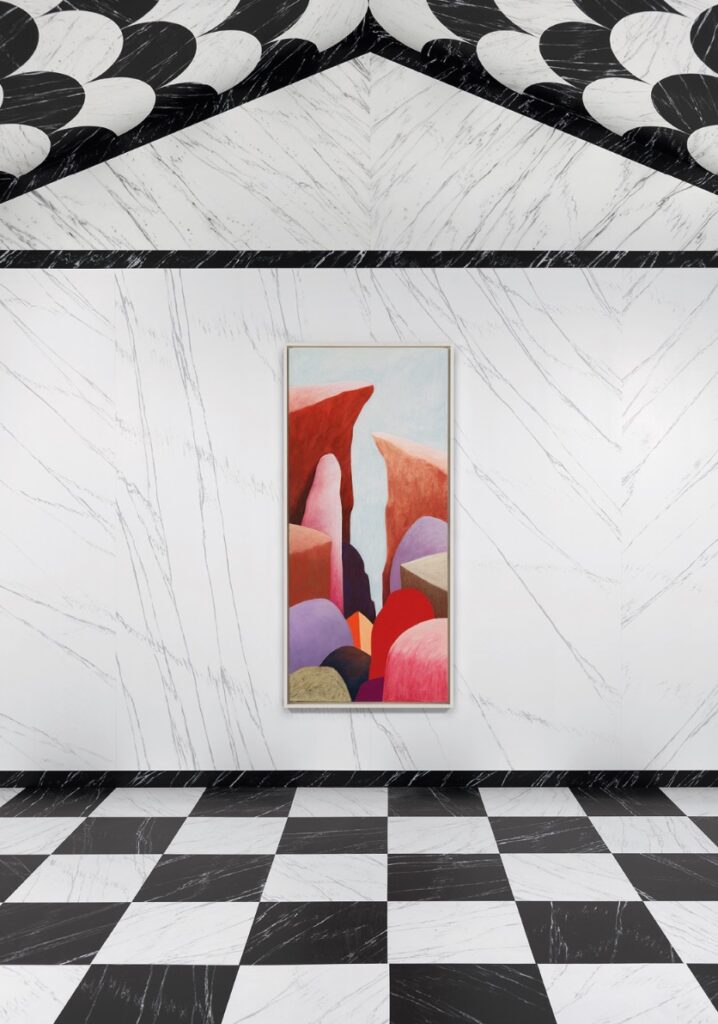
How to create a collection
Albert Oehlen “large paintings of mine with small paintings of others” | 05 September 2021 – 20 February 2022
Albert Oehlen (Krefeld, 1954) presents himself in the spaces of the MASI Lugano, LAC venue, as an artist, curator and collector. Some iconic pieces of his activity, which recount different phases of his pictorial research, are exhibited alongside works from his private collection, developing a path of suggestions and discoveries conceived by the artist himself in collaboration with MASI Lugano.
The exhibition becomes an organic but not self-referential means, a curatorial but not anthological process that offers unexpected views on Oehlen’s work, discovering and rediscovering iconic masters of contemporary art flanked by lesser-known artists of great conceptual and pictorial quality. A selection of over thirty international names, curated by Albert Oehlen himself, with works belonging to his daily life, chosen and acquired for private purposes, not intended to be exhibited in front of the general public or in relation to his activity as a painter.
Fundamental to the exhibition process is the short circuit that lies at the basis of the project: the exhibition does not intend to propose or suggest unprecedented comparisons between Oehlen’s work and that of the other artists on display, it does not wish to show the sources of inspiration or masters studied and revered but allows the public to get closer to Oehlen, invade the artist’s private world without excessive closeness through an exceptional look at his collection, discovering a personal art history of the last decades seen through his eyes.
Thanks to this critical and expositive means, the public can come into original contact with works by famous artists such as Willem de Kooning, Mike Kelley, Paul McCarthy, Duane Hanson, Franz West, Julian Schnabel, Konrad Klapheck, Richard Lindner, Richard Artschwager, Daniel Richter, Malcolm Morley and with not less significant works by artists less investigated by the general public such as Peter Brüning, Martha Jungwirth, Michaela Eichwald, John Graham, Eugène Leroy, Joyce Pensato, Christina Ramberg, Karl Wirsum, Ed Paschke or Gernot Bubenik.
Albert Oehlen exhibits himself in Lugano with all his irreverent ways, proposing a project that tells his personality and his way of painting through an ever-evolving technique that probes the limits of the medium used and is never confined within styles or subjects. He investigates the art system without becoming its accomplice, he develops the guiding ideals of the German Junge Wilde by proposing a personal exhibition that evolves the basic rules of the exhibition process to make it a free device for real dialogue with the public, challenging it and leading it towards new perceptive and collective routes.
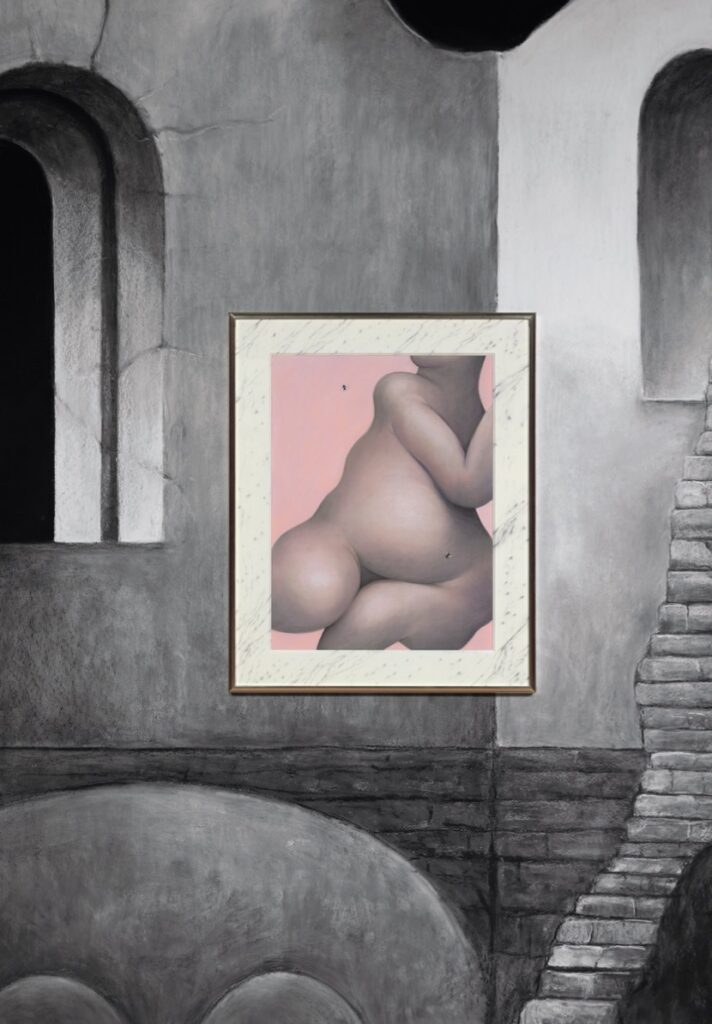
How to create a universe
Nicolas Party. Rovine | 27 June 2021 – 09 January 2022
Rovine is the first major monographic exhibition by Nicolas Party (Lausanne, 1980) set up in a European museum. The engaging and colorful immersive project was conceived by the artist in relation to the structure of the large exhibition hall located in the basement of the MASI Lugano, LAC venue.
In the inside, an imposing architecture with a central plan is divided into five distinct rooms, revolutionized through backgrounds of contrasting colors and trompe l’œil polychrome marble décorations (created in collaboration with Sarah Margnetti), each dedicated to a recurring theme in the work of Party: still life, portrait, rocky views, caves and landscape.
On the outside, four large and soft pastel wall paintings refer to the works of Arnold Böcklin, they tell ideal views of buildings in decay, recalling the title of the exhibition project and some demolitions in progress in the city of Lugano.
Outside the LAC, a large polychrome head, a lit sculpture by Party, invades the public space and scrutinizes, perhaps romantically, the lake landscape.
The categories of space, place and time enter into dialogue, activate two antithetical possibilities of the great Swiss cultural center and highlight the central need present in the exhibition making of the artist from Lausanne: generate narratives where to stage paintings and sculptures inside a universe capable of activating new possibilities for reading the works, producing relationships between them and the place in which they are presented.
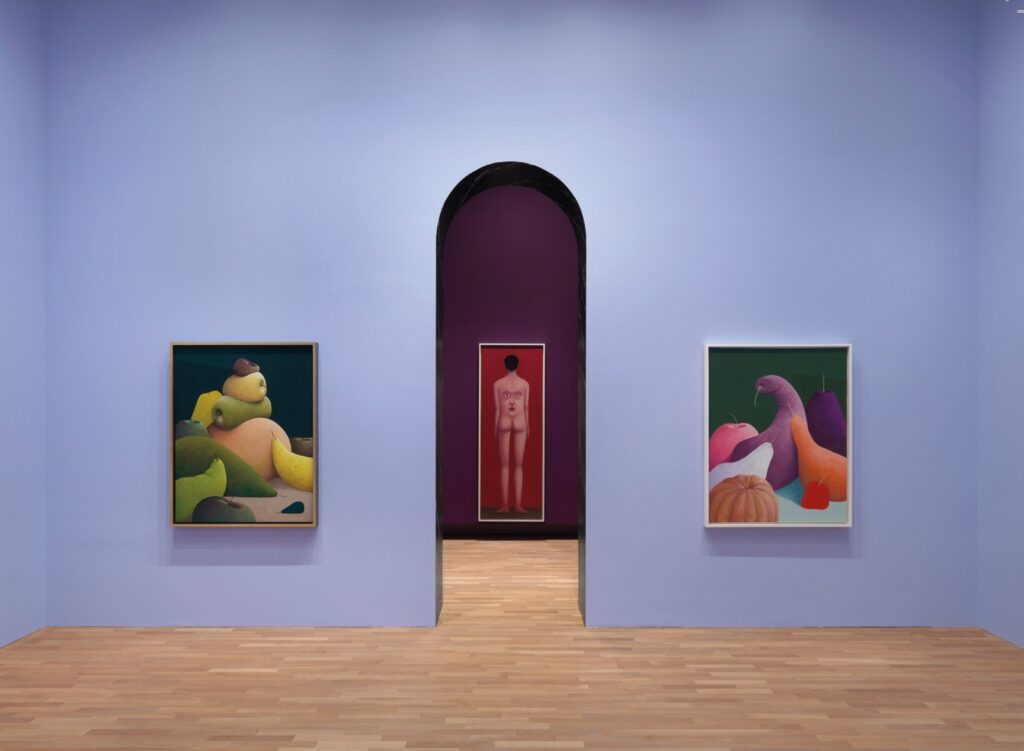
The stories narrated by Party arise from the observation of reality but are the fruit of his imagination. Hence the need for another place, a space where simple forms can come into contact with the public and produce mental associations with faces, fruits or natural environments that have not actually been painted.
This colorful and welcoming universe is always in dialogue with the history of art, showing a galaxy of subtle and enveloping references that allow the viewer to feel at home, to unconsciously activate connections with known worlds, with friendly works to be investigated again not in a cultured but getting lost in a place without space and time.
The exhibition at the MASI Lugano proves to be an exemplary case of this process, activating all the mutable possibilities of the building with the aim of offering the public a coherent cultural offer, which allows artists to fully express their thoughts and their technical skills.
Not a museum but an ecosystem, a resilient forest capable of changing from time to time, growing on the shores of Lake Lugano, a place where all disciplines can find the right home, where they can obtain the most advanced technical supports and the most refined curatorial skills within a city that has been able to demolish to be reborn, rebuild to open up to the future.







